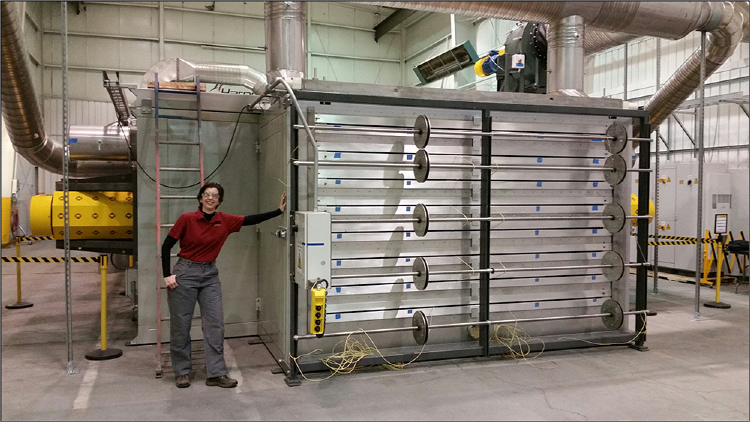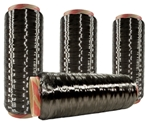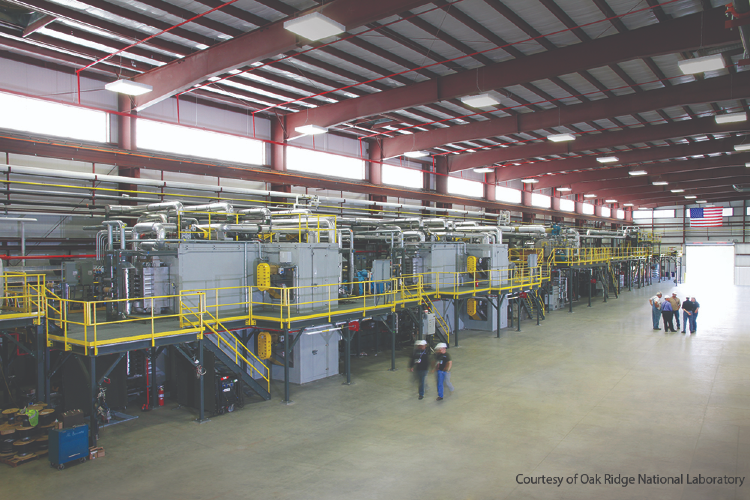
Harper International is a leader in thermal processing solutions for advanced materials and work from research scale to the stage of commercialization on full production line operations. Harper's focus is processing materials in high temperature and non-ambient atmospheres. AZoMaterials spoke to Bill Stry Ph.D., Senior Process Technology Engineer at Harper International, about the how carbon fiber oxidation processing works, the industrial applications, and what makes Harper's oxidation oven technology unique.
Can you give a brief overview of your company and the work you do?
Harper International supplies thermal processing solutions to a wide range of material processing companies and organizations. At our Buffalo, NY location with our decades of experience, we have commissioned thousands of systems with ovens, furnaces and associated atmosphere and material handling equipment. We specialize in custom designs, typically with a high degree of temperature and atmosphere control.
Could you explain how carbon fiber oxidation processing works?
The polyacrylonitrile precursor must be stabilized before the high temperature heat treatment that actually converts it to carbon fiber. The precursor is heated in air to between 200ºC and 300ºC for about 1 hour. Because of the temperature range, and especially because the process is exothermic, the heating is done with forced convection ovens. Convection allows both efficient heating of material as it enters the oven and removal of exothermic heat where the chemical reactions are most active.

Image Credit: Harper International
What are the industrial applications of carbon fiber processing?
Carbon fiber is high-value material and the producers require advanced processing systems. Carbon fiber composites are used in a variety of applications including aerospace, wind turbines, pressure vessels, power transmission, and consumer products. As new applications emerge, new grades of carbon fiber are continuing development and the thermal processing equipment must also continue to develop.

Image Credit: Harper International
What are the features and benefits of Harper’s oxidation ovens?
While Harper’s philosophy is to tailor each system to the unique requirements of the customer, our general advantages are energy efficiency, operational precision, and robustness of construction. Harper has demonstrated over 2 megawatts of energy savings in a set of large-scale carbon fiber ovens. We include a high level of instrumentation that provides full control over the temperature, airflow, and pressures within the ovens. Harper ovens have fully welded internals that withstand years of thermal cycling without loss of integrity.
What makes Harper’s oxidation oven technology unique to other furnaces from carbon fiber processing?
Harper has been supplying to carbon fiber producers for a long time, so we realize that there are many practical differences between the various precursors. Consequently, we do not have a one-size-fits-all mentality. This is a big advantage today when new types of precursors are being introduced. Harper has supplied carbon conversion lines covering an enormous range of throughputs, from research scale, at a few kilos per month, to large production scale at thousands of kilos per day.
How is Harper staying at the forefront of the industry?
Most importantly by partnering with our customers, and listening to and solving problems for them. Harper maintains an active profile as a member of the industry’s trade organizations, such as IACMI, and has a longstanding commitment to participation in trade events such as JEC, SAMPE, GOCarbonFibre, and CAMX, to name a few. It is important for us to interact with key opinion leaders and researchers in the industry. We are able to enhance our positon with these key industry players by offering our in-house capabilities and facilities for carbon conversion research at our Buffalo, NY location and we can also offer access to larger pilot facilities at other partner locations.

Image Credit: Harper International
What’s next for Harper?
For traditional polyacyrlonitrile precursors, Harper is continuing to drive for higher energy efficiency and higher line capacities. We also have expanded our production and service activities to enable shorter delivery and installation periods. For new and disruptive precursors, Harper is excited to be working with several partners on projects of differing scales and technical maturity.
Where can our readers find out more about your oxidation ovens?
Readers can visit our website at www.harperintl.com, contact us at [email protected], or by phone at +1 (716) 276-9900.
About Bill Stry, Ph.D.

Bill Stry, Ph.D., Senior Process Technology Engineer at Harper International, received his B.S. from Massachusetts Institute of Technology (MIT) and M.S. and Ph.D. in Mechanical Engineering from State University of New York at Buffalo (UB). He is the technical lead on many of Harper’s Carbon Fiber conversion systems, responsible for all design and engineering of novel technologies to help advance the growing industry.
Disclaimer: The views expressed here are those of the interviewee and do not necessarily represent the views of AZoM.com Limited (T/A) AZoNetwork, the owner and operator of this website. This disclaimer forms part of the Terms and Conditions of use of this website.